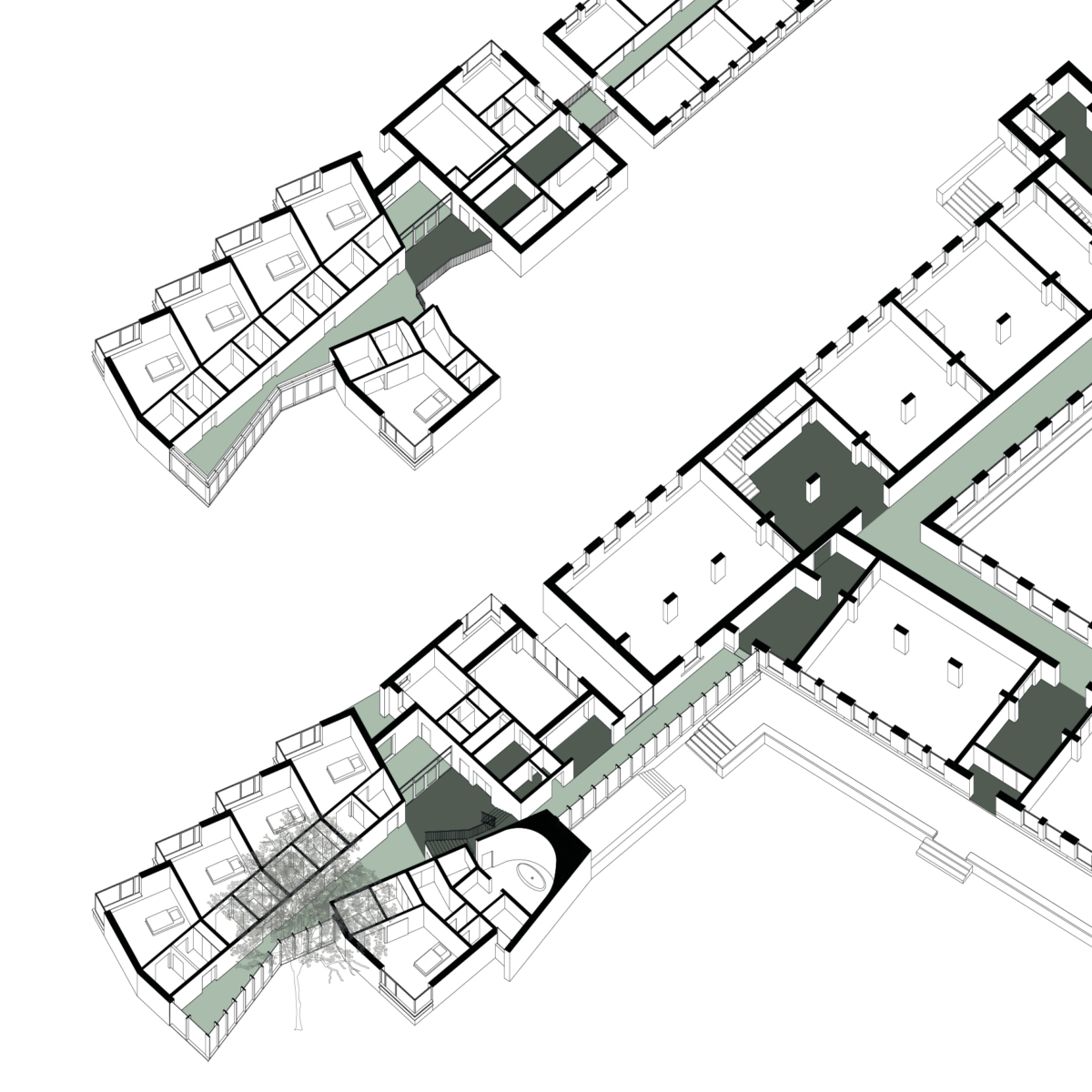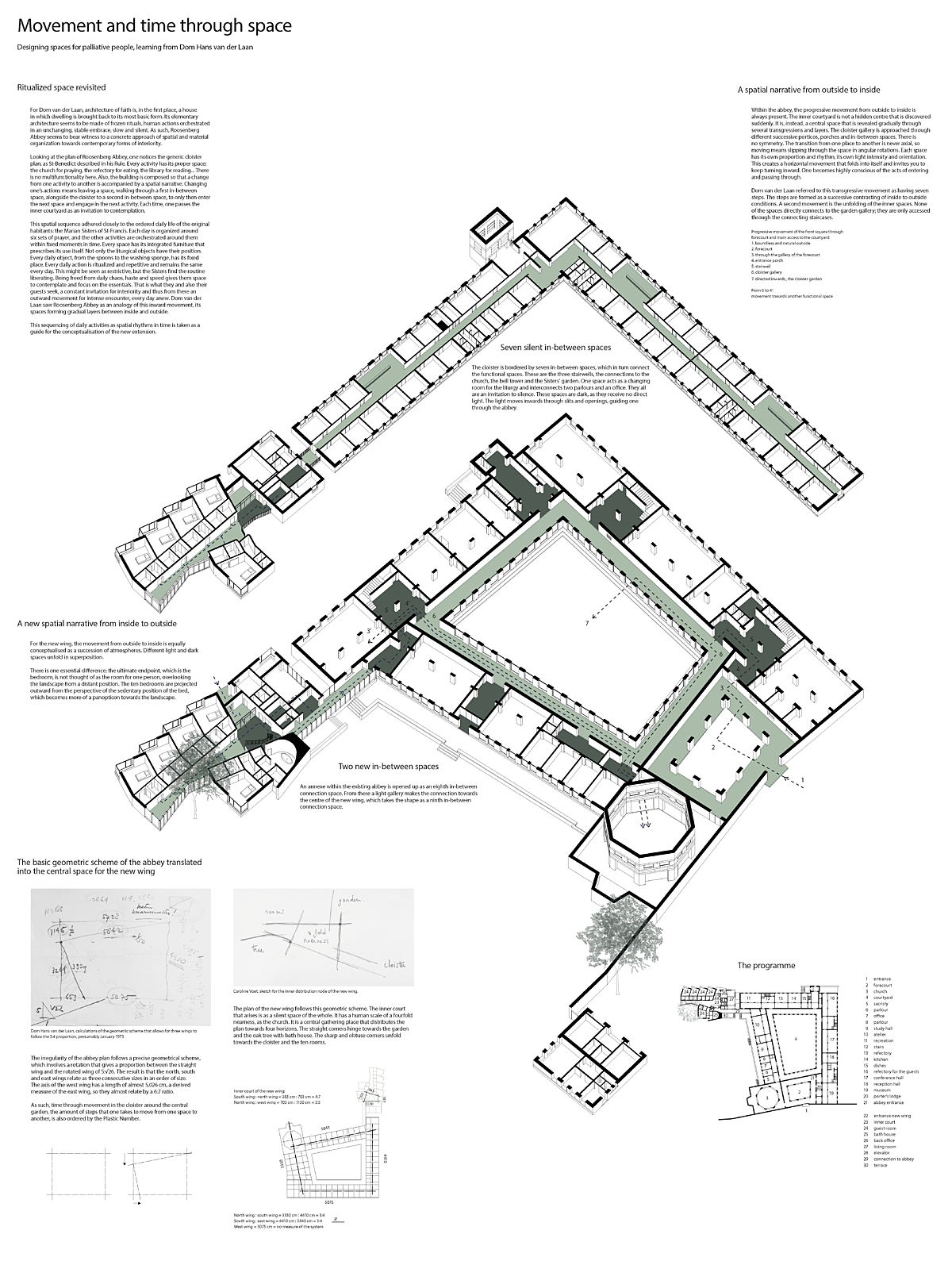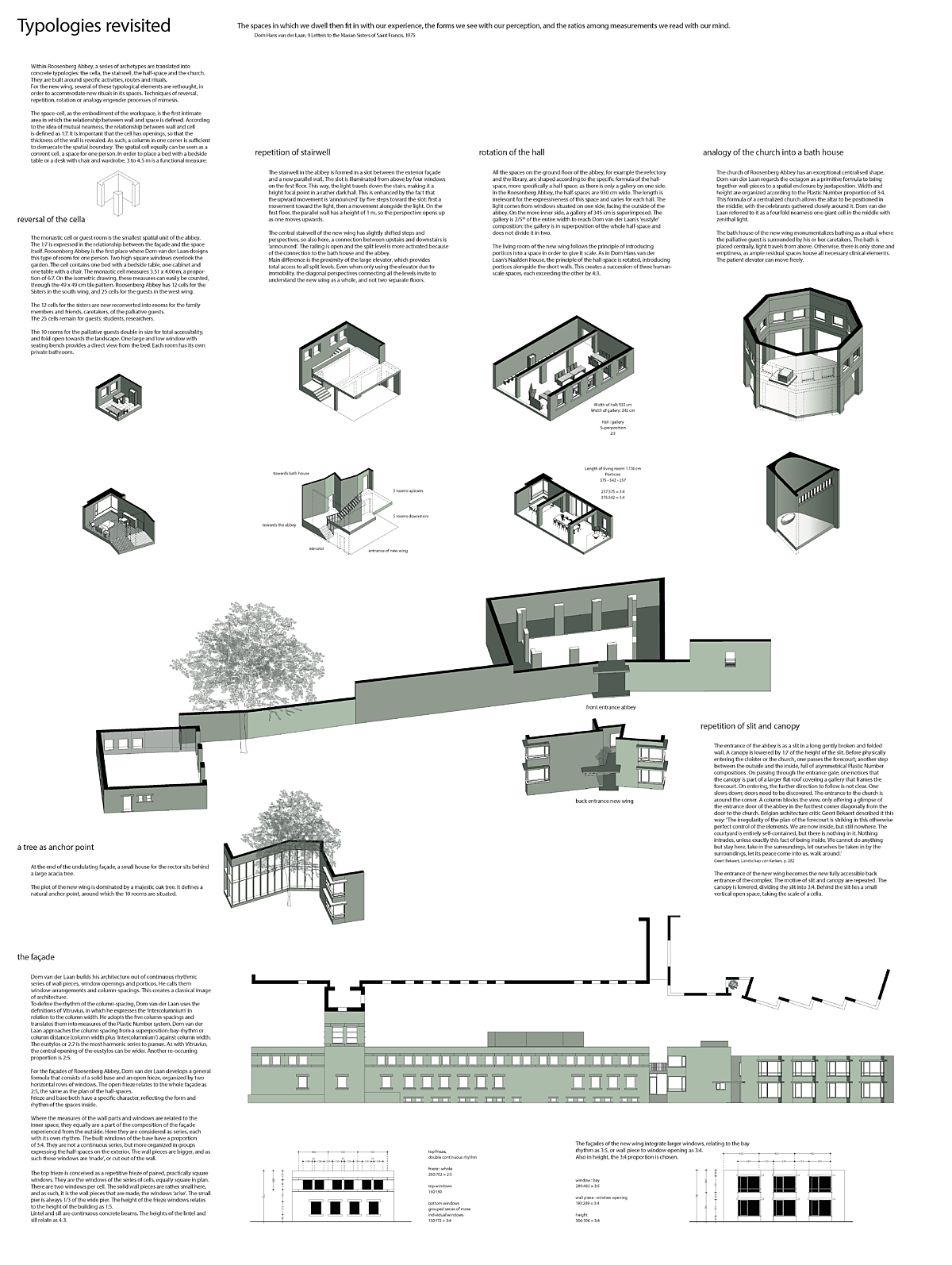Nearness in a House for (Im)mobile Guests

During a year, VOET architectuur worked on a study for a new little wing that could welcome palliative people and their family care takers at Roosenberg Abbey (Waasmunster, 1974). This extension was to support the abbey and its original function as a guesthouse. The new wing renders the entire abbey into a building accessible for everyone and was to provide the existing abbey with all the techniques necessary for its survival, like a new lung for breathing. The plan evolved through tacid knowledge, interweaving insights gained in the meetings with nurses, patients and engineers, with Caroline Voet’s expertise on the work of the architect Dom Hans van der Laan (1903-1992). Two analytical drawings make this tacid knowledge explicit: how did we distill spaces for 10 people who are palliative? For more than forty years, the Marian Sisters of Saint-Francis lived in this monastery built for contemplation. The architect built their daily patterns of life into spatial typologies, sequences and rhythms. Rituals, time and movement guided his design. In order to break away from standard hospital environments, we relied on Van der Laan’s ordering systems. Reflecting about life, and the relation between nature and human artifacts, what did Van der Laan offer us, and what did we change?
Drawings Caroline Voet and Laura Steenbeke
Model Marjolein Geyskens

